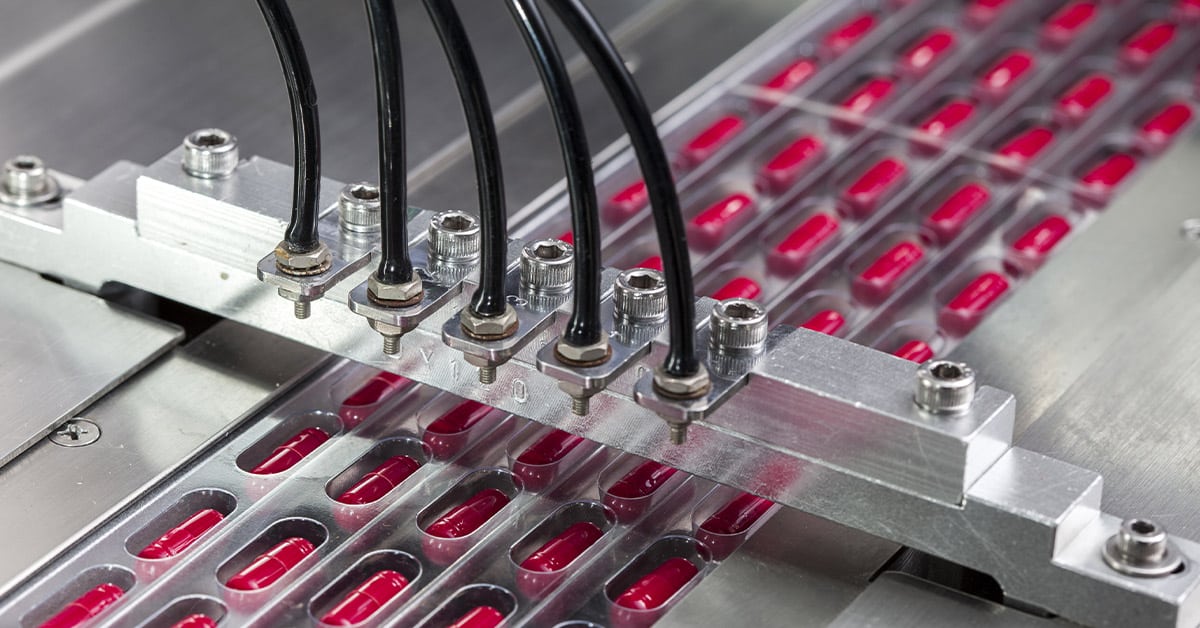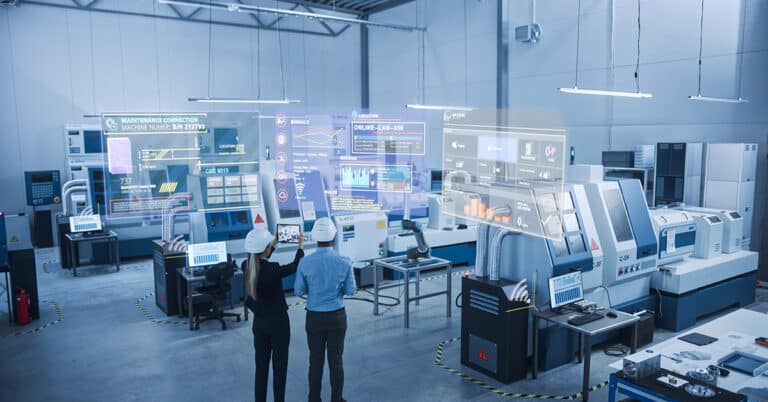Pharmaceutical manufacturing operations are challenging environments for asset maintenance. Availability of production machinery and ancillary services such as HVAC and utilities are critical to controlling costs, but stringent regulatory requirements constrain how work is done.
Internet of Things (IoT) technology provides a way to raise the effectiveness of maintenance. IoT in pharmaceutical manufacturing supports predictive maintenance strategies that lower costs while raising OEE.
Embracing IoT in pharmaceutical manufacturing
Industrial Internet of Things (IIoT) sensors gather data, process it as needed and transmit it. Some sensors use wired ethernet, but many operate wirelessly, using protocols such as Wi-Fi, Bluetooth or even cellular networks. Data is collected in a central location, in the cloud or on-premises, where it’s stored and analyzed.
Analysis is moving beyond triggering alarms as thresholds are reached to finding patterns and making predictions. As the volume of data grows, businesses are increasingly using AI to handle the output from condition monitoring sensors to determine when maintenance work is needed.
This digitalization is part of a wider trend within pharmaceutical production that some have dubbed Pharma 4.0. Referencing the Industry 4.0 transformation underway throughout manufacturing, it encapsulates the burgeoning use of data for process optimization as well as maintenance.
Industry 4.0 is an enabler of customized manufacturing. This is seen as having huge potential within the pharmaceuticals sector as demand for personalized medicine drives increasingly customer-centric manufacturing.
Sensors used in pharmaceutical industry for manufacturing & maintenance
Any physical property can be sensed, using devices that are getting progressively smaller and less expensive. Within pharmaceuticals, machine condition monitoring sensor technologies include:
- Temperature sensors: One of the most useful indicators of equipment operation, temperature measurement is used extensively throughout pharmaceutical manufacturing. Besides its role in processing, temperature measurement can detect minor deviations or drifts before they become bigger problems. Examples include finding poor electrical connections in control cabinets, detecting overheating due to poor airflow, (blocked filters), and uncovering faults in gearboxes and motor windings. Temperature sensors include traditional thermocouples and RTDs as well as thermal imaging systems that can observe a wide area from a distance.
- Vibration sensors: Rotating machining, such as pumps and motors, is widely used in pharmaceutical manufacturing — not just in processing equipment, but within HVAC and utility systems, too. Each shaft and bearing has a characteristic vibration signature that can be used to monitor machine health. Changes in the signature can indicate a need for maintenance, such as worn bearings or balance problems.
- Environmental sensors: Along with temperature, humidity is an environmental variable that, in pharmaceuticals, requires close monitoring and control. Humidity sensors are used to help ensure powders stay dry, coatings dry at the required speed, and that packaging materials feed smoothly. Multiple sensors are used in the HVAC system to ensure air quality is maintained within tight limits.
How IoT and sensors improve pharmaceutical manufacturing & maintenance
Sensors provide data about how production equipment is performing. This data was once expensive to gather and difficult to store and analyze, so only variables of the highest importance were measured. Today, though, IoT technology is rapidly changing that paradigm.
The quantities of data that can now be gathered and analyzed are revolutionizing pharmaceutical manufacturing maintenance and production.
Here are some examples:
- Continuous machine condition monitoring: Variables such as temperature, pressure, flow rates, vibration and motor current can provide a picture of how a machine is running. Changes resulting from wear and fatigue will be identified by analytics software that can recommend scheduling inspections and maintenance. The result is less maintenance, less downtime, longer machine life and fewer production interruptions.
- Production optimization: Advanced sensors and continuous monitoring allow tighter process control, leading to less variability and waste. By reducing breakdowns, they improve schedule adherence and simplify production planning and control.
- Asset tracking: Pharma plants are capital-intensive with large quantities of machines and other equipment. Using IoT in pharmaceutical manufacturing greatly improves the ability to maintain detailed histories on each piece of equipment (usually through a computerized maintenance management system).
- Logistics and supply chain: IoT sensors can read and report the various codes used on packaging as product moves into the warehouse and through to distribution. This improves inventory record accuracy and helps meet traceability requirements.
- Regulatory compliance: IoT technology helps pharma manufacturers meet tough GMP and GDP requirements by automating data collection and storage. It gives them a complete record of process conditions throughout manufacturing, supporting any traceability work performed. Linkages to the CMMS capture a complete record of all maintenance work carried out, so this can be traced to any changes in operation or processing.
Benefit from industry 4.0 technologies
Put the IoT to work in pharmaceutical manufacturing to improve maintenance as well as operational performance. Instrumented machinery enables tighter process control and data capture for process optimization and supports predictive maintenance strategies.
ATS helps manufacturers in industries including pharmaceuticals improve maintenance effectiveness, extend asset life and drive down costs. Contact us to learn more.


